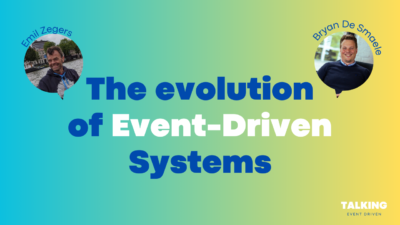Nature: A Masterclass in Event-Driven Architecture
In the world of technology and inventions, we can often find inspiration from the incredible designs that nature has refined over millennia. This practice, known as biomimicry, has led to some ingenious inventions. Examples include velcro, which was inspired by sticky plants, efficient turbines modelled after whale fins, and a vascular wound sealant based on the secretions of a marine worm.
In this blog, we’ll dive deeper into the remarkable wisdom and inspiration that nature provides, and explain how aspects of our immune system closely resemble the foundations of Event-Driven Architecture (EDA).
Our Bodies: A Complex System
Our own bodies serve as a testament to nature's ingenuity. We're still figuring out precisely how this complex system works. One defining characteristic of this biological wonder is its resilience and adaptability. Our bodies can withstand trauma, self-repair, maintain integrity, and fend off threats, adapting to changes of varying scales at often surprising speeds.
These very attributes are precisely what we seek when designing businesses, processes, and their IT systems. Can we draw inspiration from the way our bodies are designed and apply these principles to our own systems? Let's explore this intriguing possibility by looking at our immune system.
The Immune System: A Marvel of Nature
When a pathogen (something that can produce a disease) enters your body, your immune system is responsible for maintaining the integrity of your body. Let’s look at a simplified version of this defence response, where several key actors come into play:
Macrophages: These large innate cells patrol everywhere, removing dead cells and foreign bodies, and act as the first line of defence.
Lymphocytes: Adaptive cells that neutralise pathogens and eliminate infected or tumorous cells.
Neutrophils: Innate cells that are the rapid first responders, engaging pathogens and calling for assistance.
Eosinophils: Innate cells who specialise in neutralising larger pathogens.
Antibodies & complement proteins: Adaptive proteins designed to neutralise specific agents.
Cytokines: Hormones facilitating communication between cells.
When a pathogen enters, the immune system's innate cells detect it through pattern recognition, similar to a regex search on cells. They engage the pathogen, secrete hormones, and call for backup, activating the adaptive immune system. The specific cytokine profile depends on what was detected, effectively sharing critical information. When the pathogen has been neutralised, the activated cells "phase out," and macrophages clean up any damage.
This whole process is a remarkable energy-intensive task that affects every bodily function. Each change optimises the immune response and minimises damage, for example:
The metabolic system reduces nutrient release, starving the pathogen and creating an environment suitable for the immune system's work. This is what makes you lose your appetite.
The central nervous system raises body temperature and releases norepinephrine to enhance the mobility of immune cells. This is what we call fever.
Various high-energy consumers in the body, like muscle tissue, respond with insulin resistance, essentially shifting into power-saving mode. This is what causes fatigue.
Applying Nature's Wisdom to IT Systems
Now, let’s look at some parallels in the IT world. The different parts of the immune system operate within clear boundaries. Each system has its confined space and responsibilities: they do not interfere with one another. Instead, they optimise the energy delivery for their specific context.
Between these defined contexts, there is a clear "data" contract, much like the cytokine acts as a contract for the processes in our immune system. All systems communicate through broadcasted events on specific media. Each of them has a well-defined response to the data received, depending on their context.
Sounds familiar, right? These properties (clear boundaries, a data contract, broadcasted events, well-defined responses) are the essence of Event-Driven Architecture. It occurs everywhere in nature, from animals to plant life.
EDA, Nature's Time-Tested Blueprint
It’s clear that Event-Driven Architecture is no novelty, but a concept as old as nature itself. Nature has been refining this methodology for ages; it's time for us to adapt and evolve our technology in harmony with its proven principles. As developers and solution designers, we have the opportunity to draw from the ultimate masterclass, nature's own event-driven system, to craft more resilient, adaptable, and efficient systems.
Ready to rethink the way your systems respond to change using a tried-and-true methodology? Contact us today to explore how you can harness the power of Event-Driven Architecture.
Written byBryan De Smaele
Read more

PODCAST (S1 - E8): the evolution of event-driven systems
In this episode, Emil Zegers shares his insights with Bryan on how he thinks building a design-first strategy and mapping that to your runtime deployment is the way to go when it comes to Event-Driven Systems. Do you agree?

PODCAST (S1 - E7): the journey of becoming an Event-Driven Organisation
In this episode, Kris Feys shares his insights with Wout on how he thinks EDA is the future, but comes with a lot of change... Change that not everyone is ready for. Are you?

PODCAST (S1 - E6): the role of AI in Event-Driven Architecture
In this episode, Dunith Danushka shares his insights with Bryan on how he thinks EDA has the ideal foundation to build on with many technologies (and trends). It's a must-watch for anyone wanting to optimize their event-driven journey!
